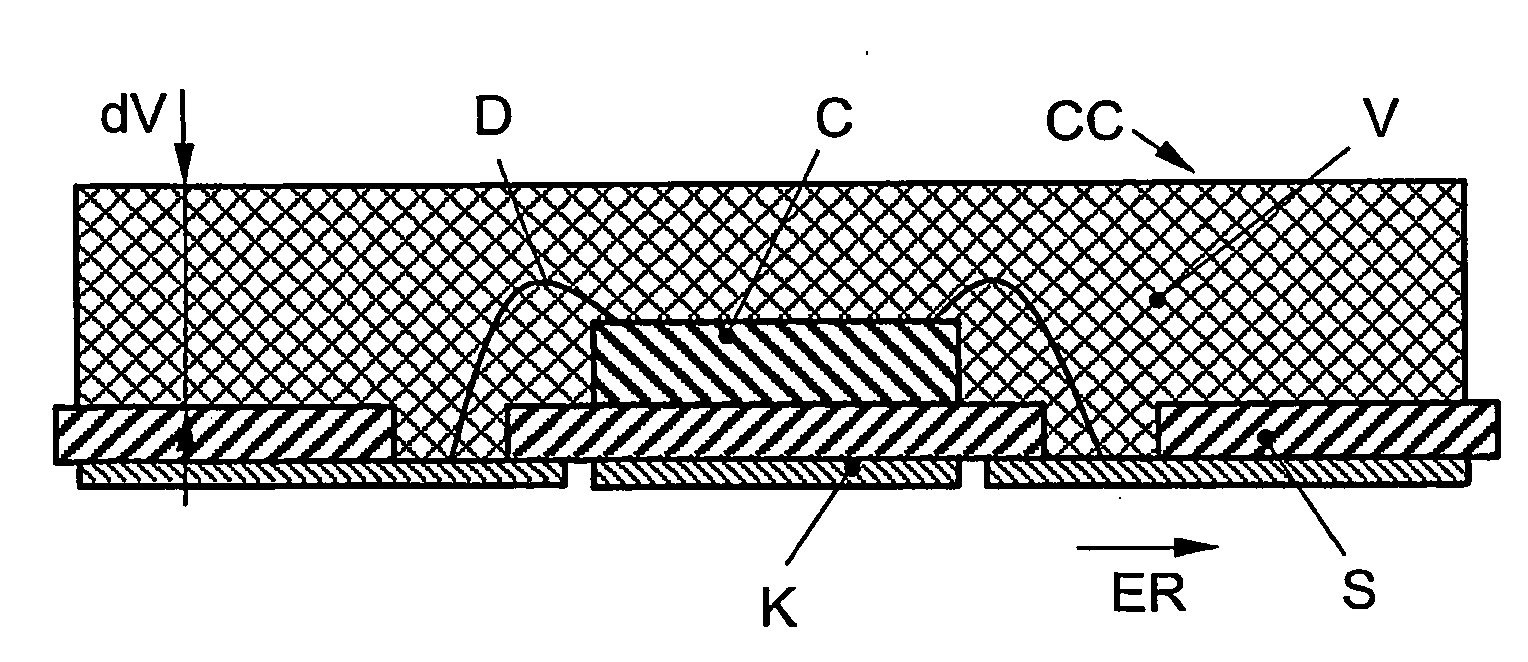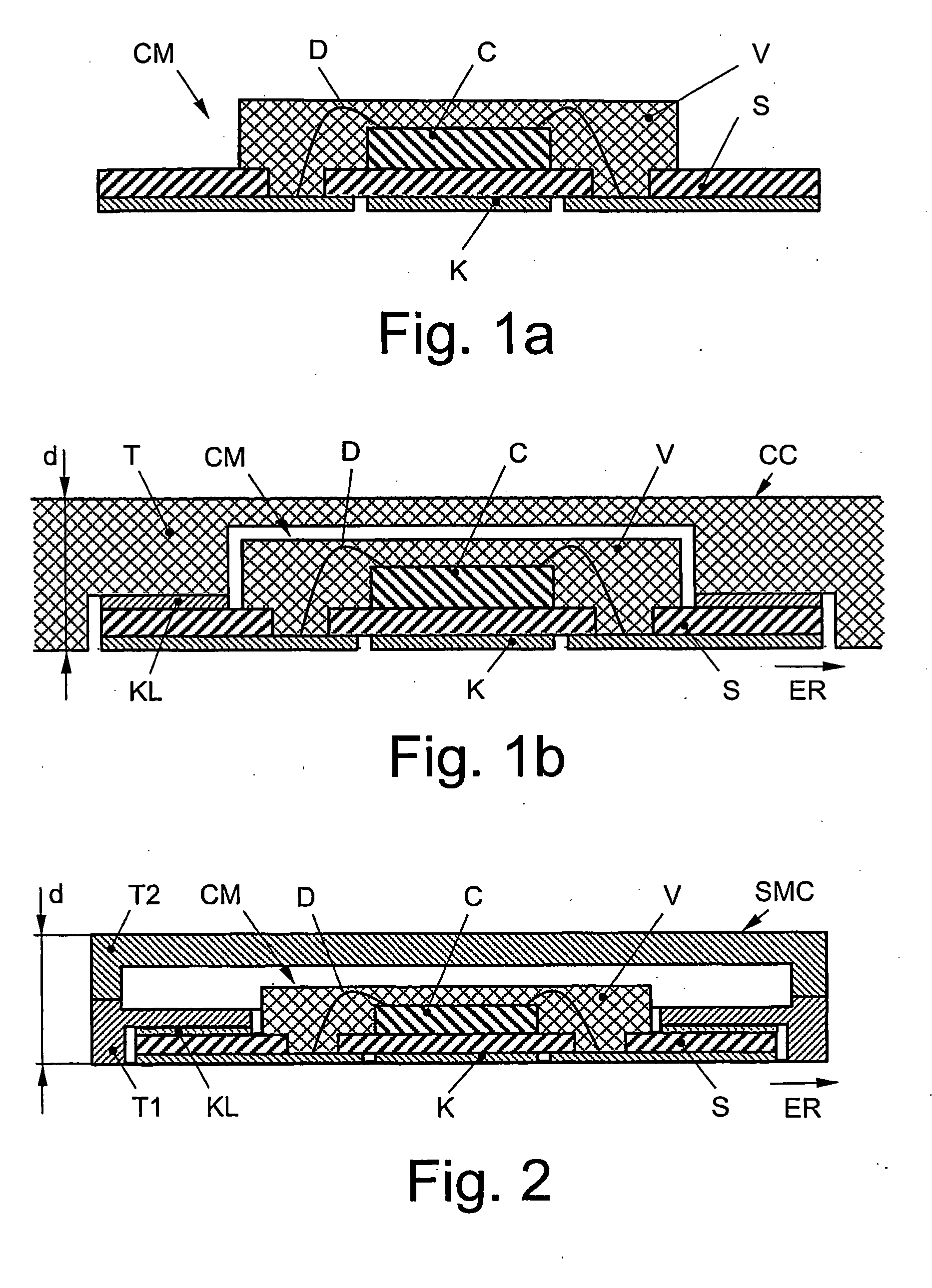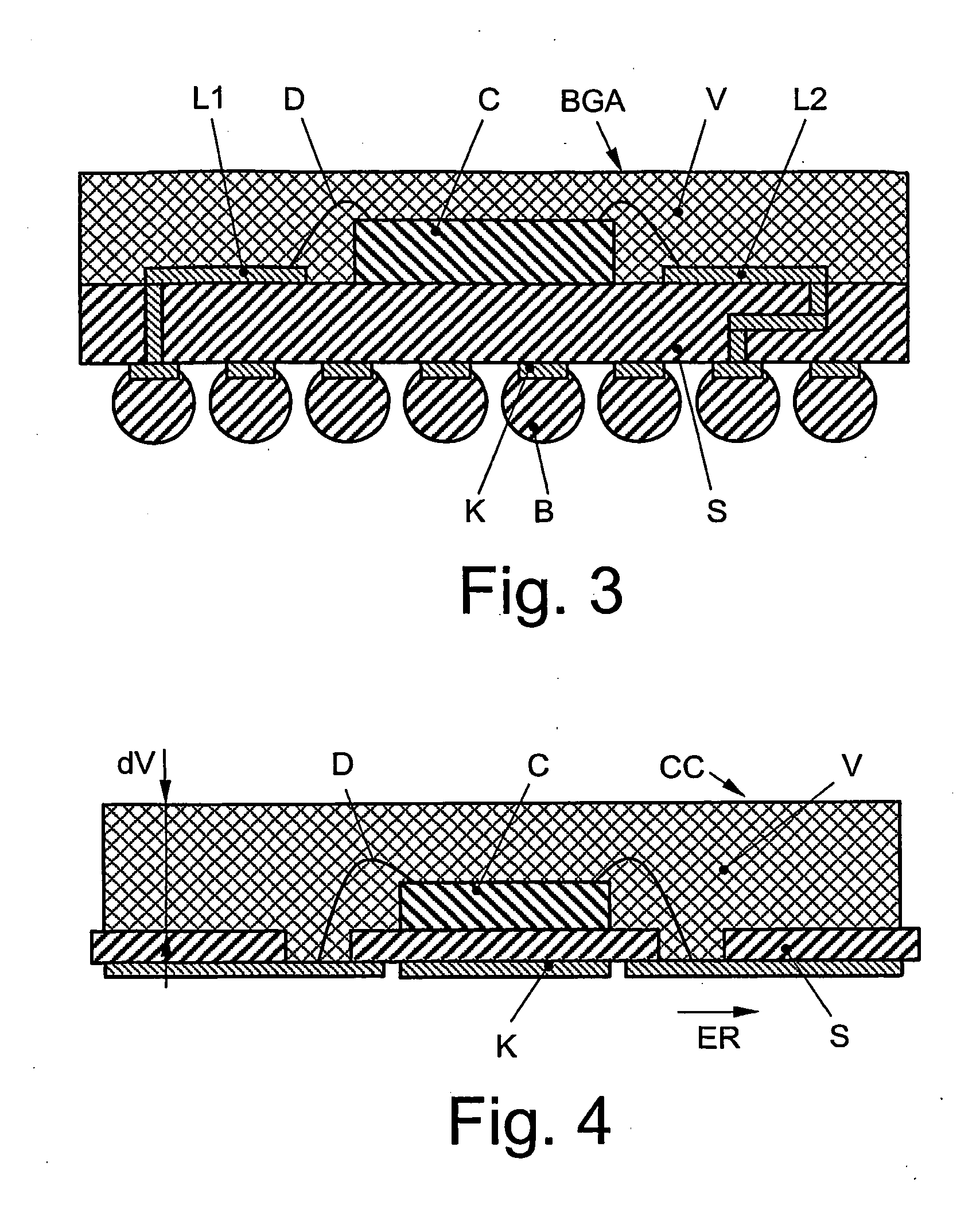Chip card for insertion into a holder
a technology of chip card and holder, which is applied in the direction of sensing record carriers, instruments, and semiconductor/solid-state device details, etc., can solve the problems of high cost, limited volume available for chip production, and high production cost of conventional production methods, so as to achieve less complex chips, mass-produced more cheaply, and extended functional range
- Summary
- Abstract
- Description
- Claims
- Application Information
AI Technical Summary
Benefits of technology
Problems solved by technology
Method used
Image
Examples
Embodiment Construction
[0038]FIG. 1a shows a chip card module CM according to prior art. A contact field K is applied to a first side of the substrate S, while a chip C is bonded to the second side of the substrate S opposite the first side. The chip C is connected to the contact field K by wires D, said wires D running through holes in the substrate S which lead from the first to the second side of the substrate S. The chip C and the wires D are embedded in an encapsulation V protecting the chip C and the wires D from external influences while being significantly smaller than the substrate S in the present case.
[0039]FIG. 1b shows a chip card CC, the chip card module from FIG. 1a having been bonded into a carrier material T. The carrier material T features a recess slightly larger than the chip card module CM, which has been produced by a method such as milling. The chip card module is installed into the carrier material T with the aid of an adhesive layer KL to form the chip card CC therewith. The carri...
PUM
 Login to View More
Login to View More Abstract
Description
Claims
Application Information
 Login to View More
Login to View More - R&D
- Intellectual Property
- Life Sciences
- Materials
- Tech Scout
- Unparalleled Data Quality
- Higher Quality Content
- 60% Fewer Hallucinations
Browse by: Latest US Patents, China's latest patents, Technical Efficacy Thesaurus, Application Domain, Technology Topic, Popular Technical Reports.
© 2025 PatSnap. All rights reserved.Legal|Privacy policy|Modern Slavery Act Transparency Statement|Sitemap|About US| Contact US: help@patsnap.com



